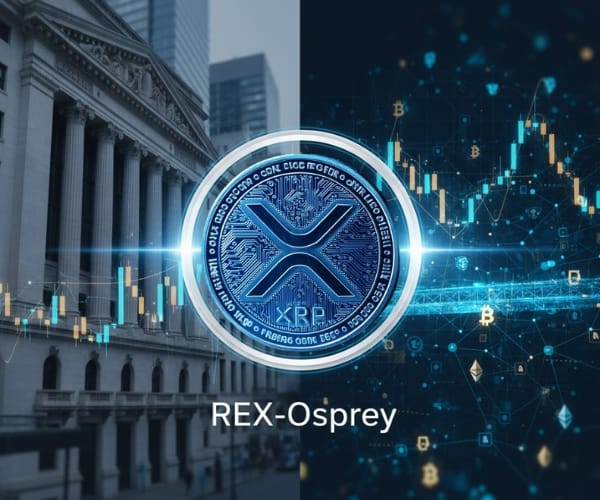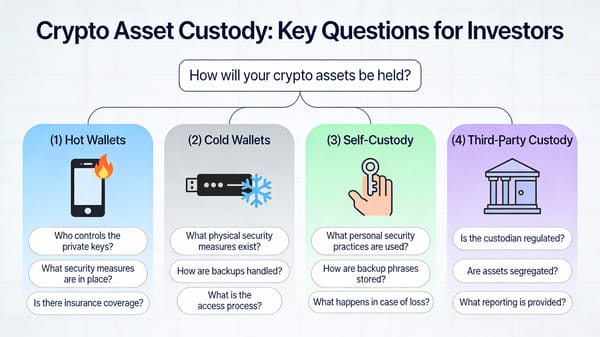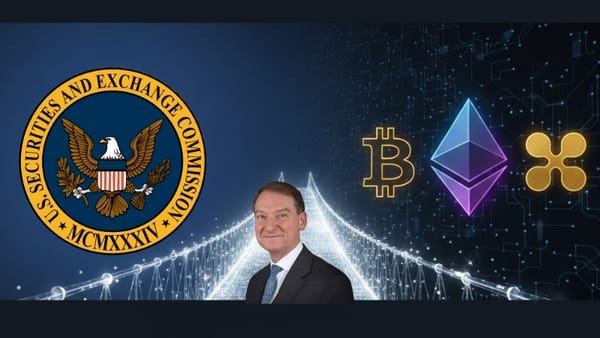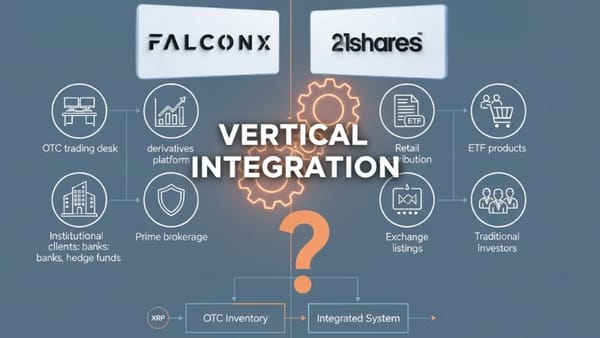First US XRP ETF Goes Live: REX-Osprey's XRPR Makes History
First US spot XRP ETF launches! REX-Osprey's $XRPR goes live Sept 18, offering regulated XRP exposure to mainstream investors. Game-changing '40 Act structure could pave way for broader crypto ETF adoption. Read how this milestone impacts XRP's future

The cryptocurrency industry reached a major milestone this week as REX-Osprey launched the first US spot XRP exchange-traded fund (ETF) trading under ticker $XRPR. After brief delays, the fund officially began trading on September 18, 2025, marking the first regulated investment vehicle to provide US investors direct exposure to XRP, the world's third-largest cryptocurrency by market capitalization.
The Securities and Exchange Commission (SEC) completed its 75-day review with no objections, clearing the path for this groundbreaking product. Unlike traditional futures-based crypto products, XRPR holds XRP directly while operating under the Investment Company Act of 1940—the same regulatory framework governing traditional ETFs and mutual funds.

Strategic Structure Sets XRPR Apart
What makes XRPR unique isn't just its XRP exposure, but its innovative regulatory approach. Fox Business reporter Eleanor Terrett noted that XRPR operates as "a spot product in a '40 Act wrapper that holds real XRP plus cash, Treasuries and some derivatives," making it more regulated than traditional spot products.
The fund structure requires at least 80% of assets to be invested in XRP or XRP-related instruments, with the remainder held in US Treasuries, money market funds, and cash equivalents. This hybrid approach allows the fund to maintain liquidity while providing direct cryptocurrency exposure through both spot holdings and a Cayman Islands subsidiary structure.
Bloomberg ETF analyst James Seyffart explained that this registered investment company (RIC) framework distinguishes XRPR from both traditional spot crypto ETFs and REX-Osprey's own Solana ETF approach. The structure provides operational flexibility while meeting strict regulatory requirements that include independent oversight, detailed reporting standards, and clear leverage limitations.
Market Context and Timing
The launch comes during a pivotal moment for XRP, which currently trades at approximately $3.02 with a market capitalization of $180.91 billion. Despite the ETF announcement, XRP's price has remained relatively stable, with some analysts noting that whale investors sold nearly 40 million XRP tokens even as ETF enthusiasm spread.
This measured market response reflects the complex regulatory landscape surrounding XRP products. While XRPR represents a significant breakthrough, the SEC continues reviewing eleven pending spot XRP ETF applications from major issuers including Franklin Templeton, Canary, and Bitwise, with decisions expected between October 18-25, 2025.
The timing is particularly strategic as futures-based XRP ETFs have already attracted nearly $1 billion in assets, demonstrating strong institutional appetite for XRP exposure. ETF analyst Nate Geraci called XRPR's launch "a clever regulatory end-around" that serves as a crucial test for investor demand.
XRP/Ripple-Specific Analysis
For XRP and Ripple, XRPR's launch represents validation in traditional financial markets after years of regulatory uncertainty. The ETF provides a regulated pathway for both institutional and retail investors to gain XRP exposure without navigating cryptocurrency exchanges, custody solutions, or technical wallet management.
Price Impact Potential: While XRP hasn't experienced an immediate price surge, analysts suggest the ETF could drive institutional inflows and increase market liquidity. The fund's regulated structure may attract conservative institutional investors who previously avoided direct cryptocurrency exposure.
Ripple's Business Operations: The ETF launch provides Ripple with additional legitimacy as it continues expanding its payment network globally. Banks and payment providers in Asia and the Middle East are increasingly adopting XRP for faster, cheaper cross-border transfers, and regulated investment products could accelerate this adoption.
Legal Standing: XRPR's approval under the '40 Act framework could strengthen XRP's regulatory position. The structure provides stricter investor protections than traditional spot ETF filings, potentially serving as a template for future cryptocurrency products.
Partnership Opportunities: Regulated ETF exposure may encourage additional financial institutions to explore XRP integration, particularly as the product demonstrates sustained investor demand and regulatory compliance.
Adoption Prospects: If XRPR proves successful, it could accelerate broader XRP adoption by providing a familiar investment vehicle for traditional finance participants, potentially bridging the gap between conventional and digital asset markets.
Looking Forward
The launch of XRPR represents more than just another investment product—it's a proof of concept for how innovative regulatory structures can bring cryptocurrency exposure to mainstream investors. If successful, XRPR could pave the path for Solana, Avalanche, and other tokens to enter ETF wrappers, potentially expanding the crypto ETF market significantly.
As the SEC prepares to rule on pending spot XRP ETF applications next month, XRPR's performance will likely influence regulatory decisions and investor sentiment. The fund's unique structure may have found the regulatory sweet spot that allows direct cryptocurrency exposure while satisfying compliance requirements—a development that could reshape how digital assets integrate with traditional finance.
For XRP holders and crypto investors broadly, XRPR's launch marks a historic milestone in cryptocurrency's evolution toward mainstream financial integration.
DISCLAIMER: This newsletter is for informational purposes only and does not constitute investment advice, advertising, or a recommendation to buy, sell, or hold any securities. This content is not sponsored by or affiliated with any of the mentioned entities. Investments in cryptocurrencies or other financial assets carry significant risks, including the potential for total loss, extreme volatility, and regulatory uncertainty. Past performance is not indicative of future results. Always consult a qualified financial professional and conduct thorough research before making any investment decisions.



